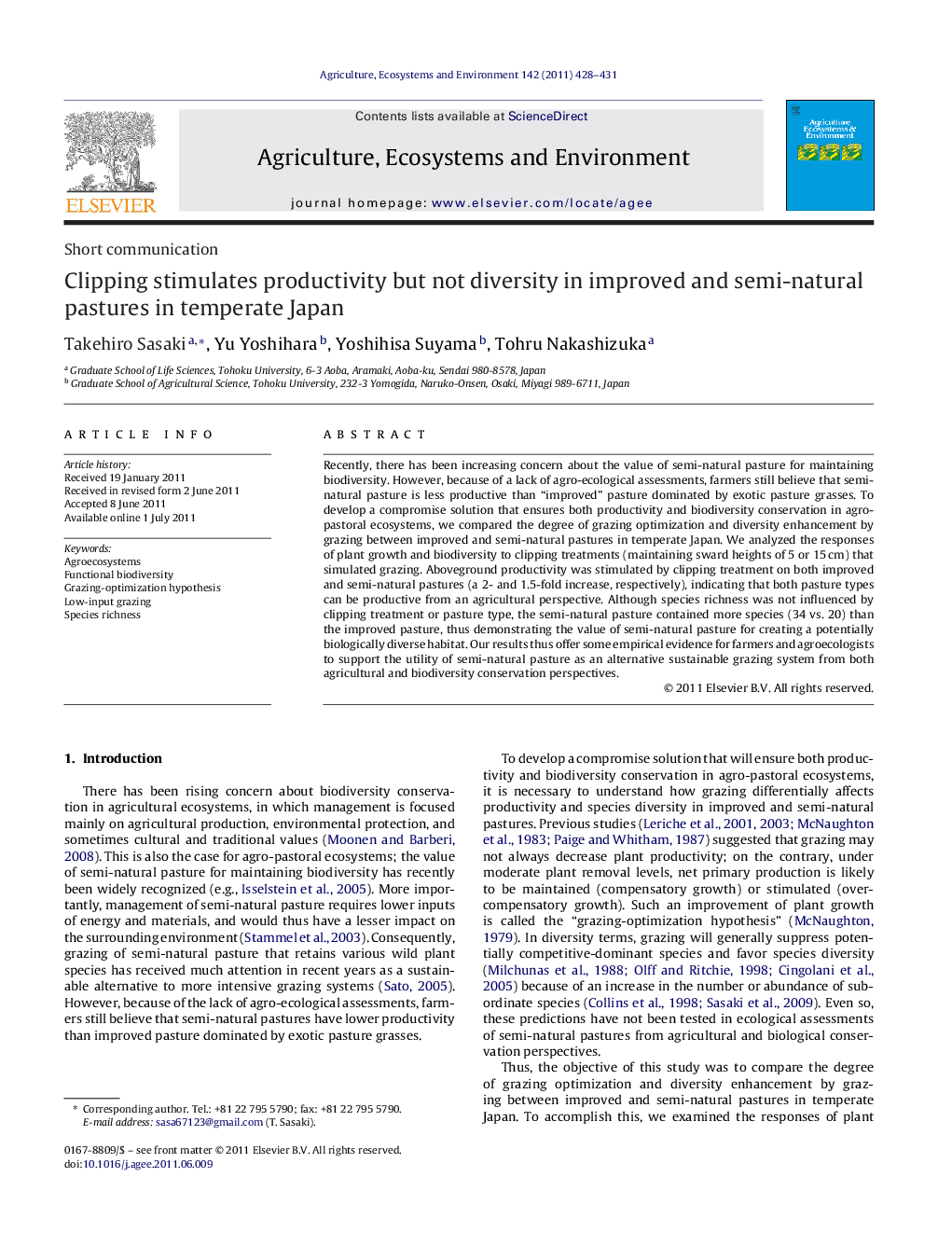| Article ID | Journal | Published Year | Pages | File Type |
|---|---|---|---|---|
| 2414690 | Agriculture, Ecosystems & Environment | 2011 | 4 Pages |
Recently, there has been increasing concern about the value of semi-natural pasture for maintaining biodiversity. However, because of a lack of agro-ecological assessments, farmers still believe that semi-natural pasture is less productive than “improved” pasture dominated by exotic pasture grasses. To develop a compromise solution that ensures both productivity and biodiversity conservation in agro-pastoral ecosystems, we compared the degree of grazing optimization and diversity enhancement by grazing between improved and semi-natural pastures in temperate Japan. We analyzed the responses of plant growth and biodiversity to clipping treatments (maintaining sward heights of 5 or 15 cm) that simulated grazing. Aboveground productivity was stimulated by clipping treatment on both improved and semi-natural pastures (a 2- and 1.5-fold increase, respectively), indicating that both pasture types can be productive from an agricultural perspective. Although species richness was not influenced by clipping treatment or pasture type, the semi-natural pasture contained more species (34 vs. 20) than the improved pasture, thus demonstrating the value of semi-natural pasture for creating a potentially biologically diverse habitat. Our results thus offer some empirical evidence for farmers and agroecologists to support the utility of semi-natural pasture as an alternative sustainable grazing system from both agricultural and biodiversity conservation perspectives.
► Semi-natural pasture can be productive from an agricultural perspective. ► Semi-natural pasture may create a potentially biologically diverse habitat. ► Semi-natural pasture can be utilized as an alternative sustainable grazing system.
